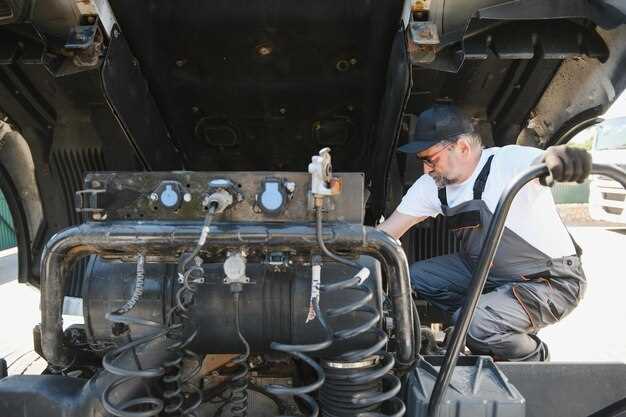

Diesel engines are known for their robustness and efficiency, but low compression can significantly hamper their performance. Inadequate compression in a diesel engine can lead to incomplete combustion, resulting in reduced power output, increased fuel consumption, and increased emissions. Understanding the underlying causes of low compression is essential for effective diagnosis and repair.
One of the primary culprits of low compression in diesel engines is wear and tear on essential components. Factors such as piston ring wear, cylinder head issues, or valve seat problems can prevent the engine from achieving the necessary pressure levels. Identifying these issues early is crucial, as prolonged low compression can lead to more severe engine damage and costly repairs.
Additionally, the techniques used to address low compression issues vary widely depending on the specific cause. From simple repairs like replacing piston rings to more complex solutions such as cylinder head overhauls, it is important to adopt a systematic approach to diagnose and rectify the issue. By doing so, diesel engine owners can restore their engines’ efficiency and prolong their lifespan.
Identifying Causes of Low Compression in Diesel Engines

Low compression in diesel engines can significantly affect performance, efficiency, and overall functionality. Identifying the root causes of this issue is crucial for proper maintenance and repair. Several factors can contribute to low compression levels in these engines.
One common cause is worn piston rings. Over time, pistons and their rings can wear down, resulting in a poor seal within the cylinder. This wear allows combustion gases to escape during the compression stroke, leading to inadequate compression. Additionally, scoring or damage to the cylinder walls can also prevent optimal sealing and performance.
Another potential issue is valve failure. If the intake or exhaust valves do not close fully due to wear, carbon buildup, or improper adjustment, the pressure within the cylinder can drop. This can occur from bent valves, damaged valve seats, or issues related to the valve springs not providing sufficient tension.
Leakage through the head gasket poses yet another risk. A blown head gasket can allow compression loss between cylinders or into the coolant system. Checking for signs of coolant contamination in the oil can help identify this problem.
Injection system malfunctions can also lead to low compression. Faulty fuel injectors may not deliver adequate fuel into the combustion chamber, creating insufficient pressure for effective combustion. Ensuring that injectors are functioning correctly and delivering fuel at the appropriate timing is essential for maintaining engine compression.
Lastly, improper timing of the fuel injection system can lead to issues with compression. If the timing is off, it can affect how the fuel-air mixture ignites within the cylinder. This misfire can result in loss of power and low compression readings.
By examining these potential causes, diesel engine owners can take the necessary steps to rectify low compression issues and restore their engine’s functionality.
Step-by-Step Guide to Diagnose and Repair Compression Problems
Diagnosing and repairing compression issues in diesel engines requires a systematic approach. Start by gathering necessary tools, including a compression gauge, wrenches, and a leak-down tester.
Begin the diagnosis by performing a compression test. Remove the glow plugs or injectors, and insert the compression gauge into the cylinder. Crank the engine and record the pressure reading. Compare the results with the manufacturer’s specifications. Low readings indicate potential compression problems.
If low compression is detected, proceed to a leak-down test. This test helps identify where the compression is lost. Pressurize the cylinder with shop air and listen for escaping air. If air escapes from the intake, exhaust, or crankcase, it indicates valve issues, ring failures, or head gasket leaks.
After identifying the source of the problem, the next step is repair. For valve-related issues, ensure that valve seats and guides are in good condition. A valve job may be necessary, involving grinding or replacing valves. If piston rings are the problem, consider engine disassembly to replace the rings and inspect cylinder walls for damage.
In cases of a blown head gasket, replace the gasket and ensure the cylinder head is not warped. Use a straightedge to check the head’s flatness. Clean all mating surfaces thoroughly to prevent future leaks.
After repairs are completed, reassemble the engine and perform another compression test to confirm that the issues have been resolved. Ensure to follow all manufacturer specifications and torque settings during reassembly.
Finally, regular maintenance and inspections can help prevent future compression issues. Regularly check oil levels, replace filters, and monitor engine performance.
Testing and Maintenance Practices for Optimal Engine Compression

Maintaining optimal engine compression is crucial for ensuring the efficient performance and longevity of diesel engines. Regular testing and proper maintenance practices can significantly enhance compression levels, leading to improved fuel efficiency and reduced emissions.
Regular compression testing is the first step in assessing the engine’s condition. Compression tests should be performed using a reliable gauge to measure the pressure in each cylinder. Comparing the results against the manufacturer’s specifications helps identify any discrepancies indicating potential issues, such as worn piston rings or leaking valves.
In addition to compression testing, conducting a leak-down test provides further insight into the engine’s health. This method involves pressurizing each cylinder and observing where air escapes. A significant loss of pressure can point to issues such as cylinder wall wear or faulty gaskets, necessitating immediate attention to prevent severe engine damage.
Routine maintenance is equally vital. Regular oil changes, using high-quality lubricants, and maintaining proper fuel quality can help minimize wear and tear inside the engine. Additionally, inspecting the air intake system and ensuring optimal airflow contributes to better combustion and, subsequently, improved compression levels.
Replacing old or damaged components, such as injectors or fuel filters, can also enhance engine performance. Over time, these parts can become clogged or worn, impacting the combustion process and leading to reduced compression. Scheduled replacement based on manufacturer recommendations prevents such degradation.
Furthermore, maintaining correct valve clearance is essential. Incorrect clearance can affect engine timing and lead to a loss of compression. Regularly checking and adjusting valve clearance as part of a routine maintenance schedule ensures that the engine operates efficiently.
Finally, addressing any signs of wear promptly is critical. Unusual noises, increased exhaust smoke, or decreased performance should never be ignored, as they can indicate underlying compression issues. Timely diagnosis and repair of these symptoms can help restore optimal engine compression and extend the engine’s service life.






